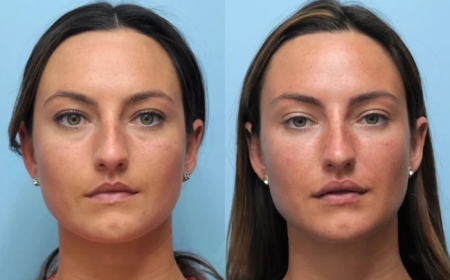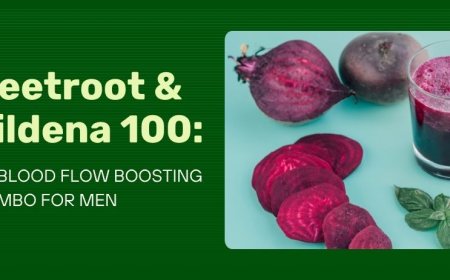Minoxidil for Men: Benefits, Side Effects, and How to Use It
Discover how Minoxidil helps men regrow hair, slow hair loss, and boost scalp health. Learn benefits, side effects, and tips for proper use.

Hair thinning and male pattern baldness affect millions of men across the UK. While genetics often drive these conditions, modern treatments now offer practical ways to manage hair loss. One of the most widely used options is Minoxidil-a topical solution or foam applied directly to the scalp. Originally developed as a blood pressure medication, Minoxidil has gained strong support as an effective product for stimulating hair growth.
This Blog covers the key benefits, possible side effects, and proper method for applying Minoxidil. With consistent use and realistic expectations, many men can improve the appearance and density of their hair.
What Is Minoxidil?
Minoxidil is a topical medication that stimulates hair follicles and encourages hair regrowth. In the UK, you can find it in pharmacies under brand names such as Regaine, or as a generic product. It typically comes in two strengths: 2% and 5%, with the latter often recommended for men due to its higher effectiveness.
Minoxidil does not require a prescription and is approved by the Medicines and Healthcare products Regulatory Agency (MHRA) for use in treating hereditary hair loss. Unlike oral medications, which affect the whole body, topical Minoxidil targets the scalp directly.
How Minoxidil Works
Minoxidil works by widening the blood vessels in the scalp, which helps improve blood flow to the hair follicles. This increased circulation delivers more oxygen and nutrients to the hair roots, encouraging them to shift from a resting phase into an active growth phase.
Hair follicles go through several cycles: growth (anagen), rest (telogen), and shedding (catagen). Minoxidil helps extend the growth phase while shortening the resting and shedding phases. The result is longer, thicker strands of hair over time.
Benefits of Minoxidil for Men
Minoxidil helps stimulate hair growth, slow hair loss, and increase hair density in men with hereditary thinning.
1. Promotes Hair Regrowth
Men who apply this hair loss medicine for men twice daily may start seeing new hair growth within three to six months. The product stimulates dormant follicles and helps revive thinning areas. It is particularly effective on the crown (top) of the scalp, although some men report improvements at the hairline as well.
2. Slows Hair Loss
Minoxidil does not cure baldness, but it can slow the rate of hair loss. Regular use may help men maintain their current hair density for longer, delaying the need for more invasive treatments such as hair transplants.
3. Easy to Apply
Minoxidil foam and liquid are simple to apply. Most men incorporate the routine into their morning and evening grooming habits without much trouble. The foam dries quickly and does not leave an oily residue.
4. Accessible Without Prescription
In the UK, men can buy this hair loss medicine for men over the counter or online from reputable pharmacies. However, dont buy Minoxidil without doctor consultation if youre unsure whether it's safe or suitable for your condition.
5. Suitable for Long-Term Use
Men can safely use Minoxidil for years if no side effects occur. Continuous application helps maintain results, as stopping the treatment usually causes hair loss to resume within a few months.
Side Effects of Minoxidil
While most men tolerate Minoxidil well, a few may experience mild to moderate side effects. These usually appear within the first few weeks of treatment and often subside with time.
1. Scalp Irritation
Itching, flaking, dryness, or redness may occur at the application site. Men with sensitive skin should consider switching from liquid to foam, which contains fewer alcohol-based ingredients.
2. Unwanted Facial Hair
Some users report hair growth on the forehead, cheeks, or temples if the solution drips during application. Keeping the product confined to the scalp can reduce this risk.
3. Shedding Phase
A temporary increase in shedding may appear during the first few weeks of use. This phase happens because Minoxidil forces older hairs to fall out to make room for new growth. Although alarming, it is usually a sign that the treatment is starting to work.
4. Allergic Reactions
Rarely, men may experience a rash, hives, or swelling. In such cases, they should stop using the product immediately and consult a pharmacist or GP.
5. Systemic Effects
Very rarely, Minoxidil may enter the bloodstream and affect blood pressure or heart rate. These effects are more common when applied excessively or to broken skin. Men with existing heart conditions should consult a doctor before starting treatment.
How to Use Minoxidil
Correct use plays a big role in achieving the best results with Minoxidil. Following the instructions carefully helps maximise its effectiveness and reduce the risk of irritation.
Step 1: Choose the Right Form
Men can select either liquid or foam. The foam version is often preferred because it dries quickly and is less likely to cause scalp irritation. Both versions contain the same active ingredient. Synergy Pharmacy offers both forms with clear usage guidance.
Step 2: Apply Twice Daily
Apply Minoxidil once in the morning and once in the evening, about 12 hours apart. Consistency is key. Skipping applications can limit results or slow progress.
Step 3: Apply to Dry Scalp
Ensure the scalp is dry before applying Minoxidil. Wet skin can dilute the product and increase absorption into the bloodstream, which may raise the risk of side effects.
Step 4: Use the Right Amount
For liquid: apply 1ml to the thinning areas using the provided dropper. For foam: use about half a capful. Gently massage the product into the scalp using fingers. Wash hands immediately after application.
Step 5: Allow It to Dry
Let the product dry fully before using styling products, wearing hats, or going to bed. This usually takes 20 to 30 minutes.
Who Should Use Minoxidil?
Minoxidil suits men experiencing hereditary hair loss (androgenetic alopecia), especially those in the early to middle stages. It works best for men under 40 who still have some active hair follicles.
It is not suitable for:
-
Men with no visible hair on the scalp
-
Men with scalp damage or skin conditions
-
Men under 18 years old
-
Men using other scalp treatments unless advised by a healthcare professional
Tips for Better Results
-
Be patient. It can take up to six months to notice visible improvement.
-
Dont apply more than directed. Overuse wont speed up hair growth.
-
Stick with the treatment. Stopping use usually causes new hair to fall out.
-
Combine with other treatments if advised, such as oral Finasteride.
-
Take photos monthly to track progress more accurately.
FAQs
1. Can I use Minoxidil with other hair loss treatments?
Yes, Minoxidil is often used alongside Finasteride (a tablet taken daily). Some men also use ketoconazole shampoo, which may help reduce inflammation on the scalp. Always consult a pharmacist or GP before combining treatments.
2. Will my hair fall out again if I stop using Minoxidil?
Yes. Any hair regrowth achieved with Minoxidil is usually lost within a few months after stopping the treatment. To maintain results, continue applying the product regularly.
3. How long before I see results?
Some men notice changes as early as three months, but full effects usually appear after six to nine months of consistent use. Results may vary depending on age, genetics, and how early treatment begins.
4. Can Minoxidil regrow a full head of hair?
Minoxidil can improve density and slow further loss, but it rarely restores a full head of hair, especially in advanced cases. It works best for men with thinning hair, not complete baldness.
5. Is Minoxidil safe for long-term use?
Yes, most men can use Minoxidil for years without issues. Long-term safety has been well studied, and side effects are usually mild and manageable.


































